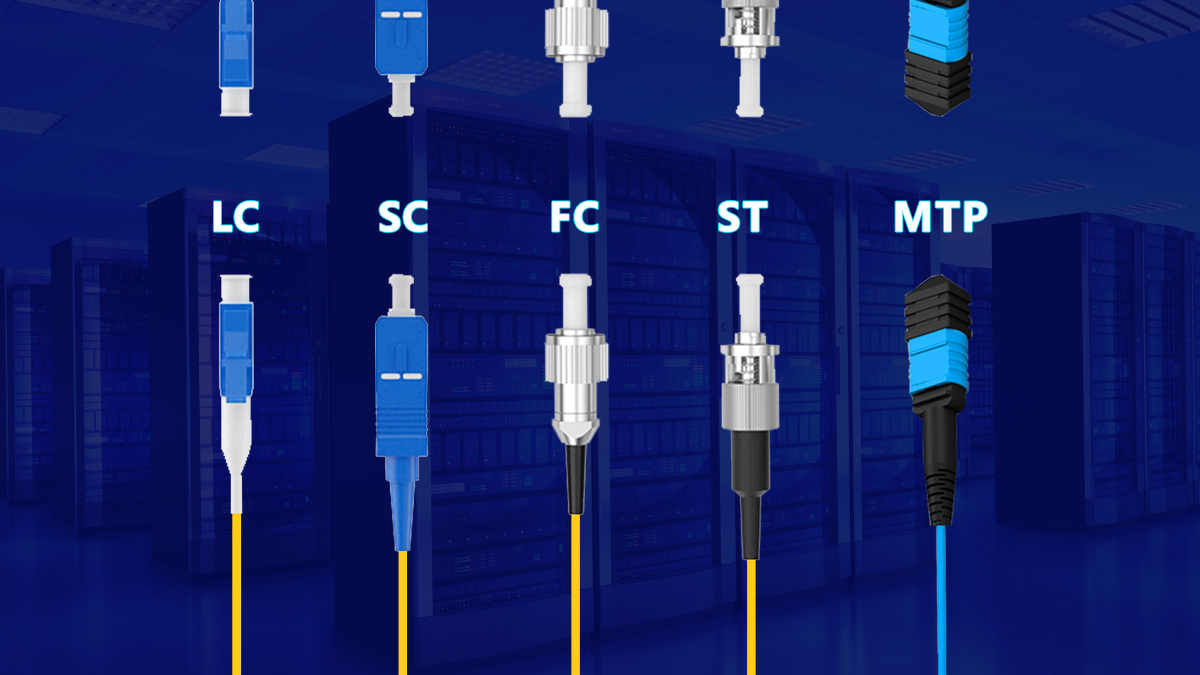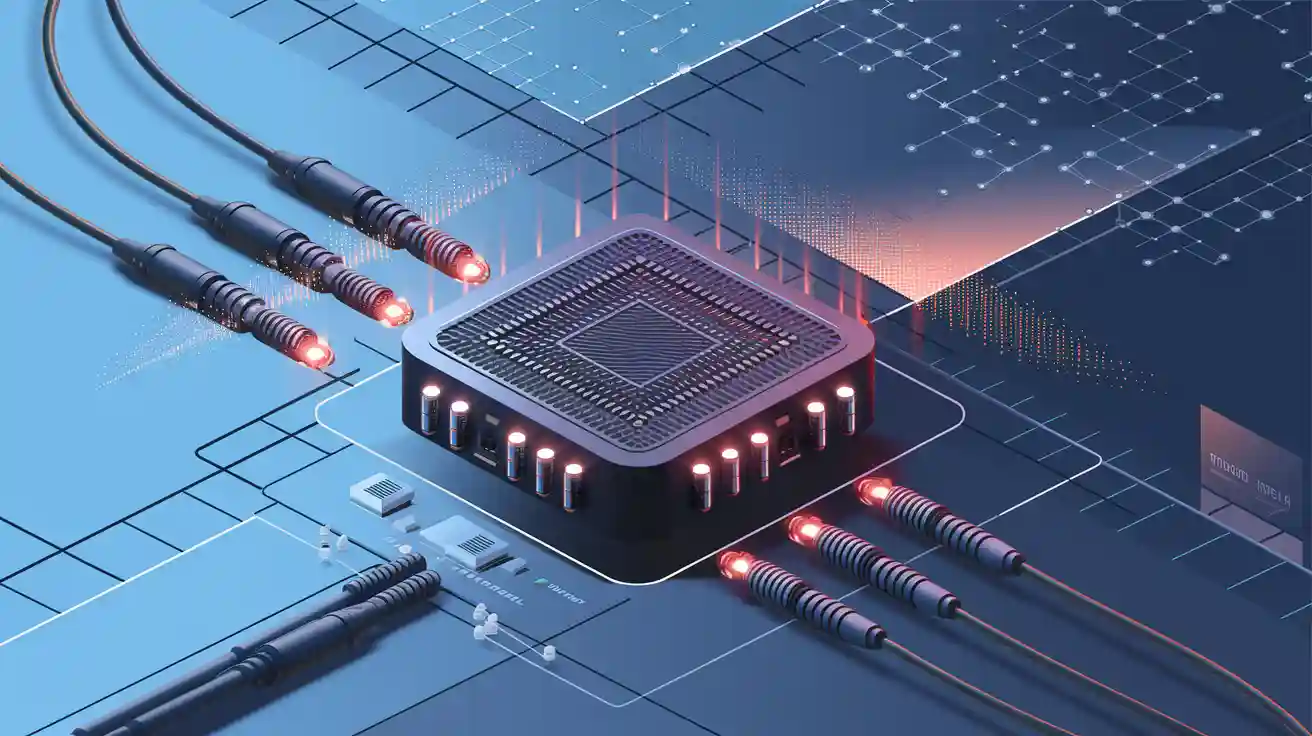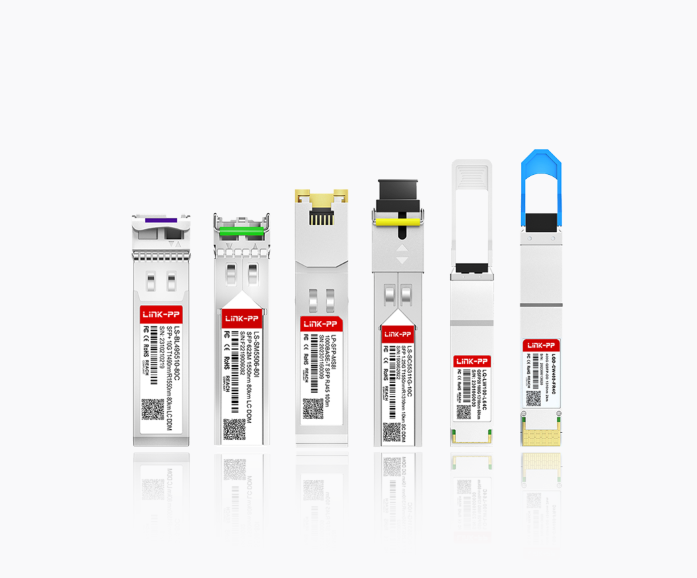
Fiber optic connectors play a critical role in optical transceivers, linking transceiver modules to fiber optic cables for seamless data transmission. When selecting the appropriate optical module for a network application, one crucial factor to consider is the type of fiber connector it employs. Fiber connectors are essential for ensuring stable signal transmission, secure connections, and compatibility across various networking environments. This guide explores the most common fiber connector types used in optical transceivers—LC, SC, FC, ST, and MPO/MTP—and highlights how LINK-PP integrates these connectors into its diverse range of optical transceiver products.
Key Takeaways
Fiber optic connectors link transceivers to cables for data transfer.
SC connector features a square, snap-in design remain relevant in enterprise environments and FTTH (Fiber-to-the-Home) deployments.
The LC (Lucent Connector) is a compact, push-pull design connector widely adopted in data centers and telecom networks.
FC connectors have a screw-on design for strong, stable connections. They are used in high-vibration settings like industrial networks or ODF (Optical Distribution Frames).
The MPO (Multi-Fiber Push-On) and its enhanced variant, MTP, are the backbone of parallel optics, enabling multi-fiber connections in 40G/100G/800G modules.
1. LC Connector (Lucent Connector)
The LC connector is the most widely used fiber optic connector in modern data center and enterprise environments. It features a small form factor (SFF) with a 1.25mm ferrule, allowing for high-density connections in limited spaces. Their compact design makes them ideal for environments where space is limited, such as data centers and telecommunications racks. You’ll find LC connectors available in single-mode and multimode configurations, supporting both simplex and duplex designs.
Advantages:
Push-pull latching mechanism
High-density and compact design
Commonly used with SFP, SFP+, and SFP28 transceivers
Compact size allows for higher connection density.
Low insertion loss ensures reliable signal transmission.
High return loss minimizes signal reflection.
Suitable for both single-mode fiber and multimode fiber applications.
Disadvantages:
Small size makes handling and installation challenging.
Precision is required during installation to avoid signal loss.
Higher initial costs compared to SC connectors.
Risk of damage due to delicate design.
LINK-PP Application: LINK-PP’s SFP+ 10G LC transceivers frequently utilize LC connectors for reliable and compact fiber connections.
2. SC Connector (Subscriber Connector)
The SC connector is a standard connector with a 2.5mm ferrule. It was once the dominant choice for many telecom and enterprise networks but is now gradually being replaced by LC connectors in newer applications. LINK-PP’s LS-BL315501-10C modules integrate Simplex LC interfaces to support asymmetric bandwidth needs, aligning with telecom standards.
Key Features:
Snap-in push-pull locking system
Easy to install and use
Primarily used in older transceiver models and patch panels
Applications
SC connectors are versatile and find applications in various industries. You’ll often see them in:
Telecommunications: Supporting long-haul communication over single-mode fiber.
Data Centers: Ensuring high-speed data transmission for both single-mode and multimode fiber.
FTTH (Fiber to the Home): Delivering high-speed internet to residential areas.
VSFF (Very Small Form Factor) Networks: Optimizing space in dense network environments.
3. FC Connector (Ferrule Connector)
The FC (Fiber Connector) uses a threaded coupling mechanism, providing secure connections in high-vibration settings like industrial networks or ODF (Optical Distribution Frames). FC fiber optic connectors are known for their robust design and reliable performance. These connectors feature a round metal boot and a threaded fastening mechanism, ensuring secure connections even in environments prone to vibrations. The screw-type lock design minimizes the risk of accidental disconnection, making FC connectors ideal for critical applications.
Key Features:
Durable and reliable in harsh environments
Used in test equipment, long-distance networks, and some industrial applications
FC Use Cases
Military/Industrial: Resistant to mechanical stress.
Long-Haul Networks: Minimal signal degradation over extended distances.
4. ST Connector (Straight Tip)
ST connectors, short for Straight Tip connectors, are one of the oldest and most reliable fiber optic connectors. These connectors feature a round design with a bayonet-style locking mechanism, ensuring secure and stable connections. Their robust design ensures durability, even in environments prone to vibrations or physical stress. ST connectors use a bayonet-style coupling mechanism and were commonly found in early fiber networks, especially in multimode applications. For legacy systems requiring ST interfaces, LINK-PP provides tailored transceiver solutions to maintain compatibility and functionality.
Performance benchmarks highlight their efficiency:
Metric | Description |
|---|---|
Insertion Loss | Measures the signal energy lost when the connector is inserted; lower values indicate better performance. |
Return Loss | Quantifies the signal reflected back towards the source; higher values indicate better signal quality. |
5. MPO/MTP Connector
MPO (Multi-Fiber Push-On) and MTP (a high-performance MPO variant) connectors are used for high-density fiber installations. These connectors are critical for spine-leaf architectures and AI-driven data centers requiring massive scalability. They are common in 40G/100G/400G data center applications.
MPO/MTP Benefits:
Supports high-speed and parallel transmission
Reduces cable clutter and simplifies management
Common in QSFP+ and QSFP-DD transceivers
Applications
MPO/MTP connectors excel in high-density systems, supporting rapid deployment and scalability. You’ll find them indispensable in:
High-Density Interconnects: Accommodating up to 72 fibers in a single connector, perfect for space-constrained environments.
Scalability: Facilitating upgrades from 10G to 40G or 100G networks without major infrastructure changes.
Simplified Cable Management: Reducing cable clutter, improving airflow, and minimizing heat-related failures.
Quick Deployment and Maintenance: Plug-and-play functionality ensures rapid installation and easier upkeep.
Data Centers: Supporting short-distance, direct multi-fiber connections for high-speed data transmission.
High-Speed Network Interconnects: Enabling simultaneous connections of multiple fiber cores in 40G, 100G, and higher-rate applications.
LINK-PP Application: LINK-PP offers a wide range of QSFP and QSFP-DD transceivers with MPO/MTP interfaces for high-bandwidth data center interconnects.
Choosing the Right Connector: Key Considerations
Selecting a connector depends on application requirements:
Data Centers: Prioritize LC or MPO for density and scalability.
Telecom/FTTH: SC or FC for durability and long-distance performance.
Future-Proofing: Opt for MTP/LC combos to support 800G+ upgrades.
FAQ
What is the difference between single-mode and multimode fiber connectors?
Single-mode connectors work with smaller cores (9 µm) and support long-distance communication. Multimode connectors have larger cores (50-62.5 µm) and are better for short-range applications. Choose based on your network's distance and bandwidth needs.
How do I clean fiber optic connectors?
Use a lint-free wipe or a specialized cleaning tool. Apply isopropyl alcohol for stubborn dirt. Always inspect the connector under a microscope after cleaning to ensure no debris remains.
Tip: Regular cleaning prevents signal loss and ensures optimal performance.
Can I mix different connector types in one network?
Yes, but you need adapters or hybrid cables to connect different types. For example, an SC-to-LC adapter can bridge SC and LC connectors. Ensure compatibility with your transceiver modules.
Why is insertion loss important in fiber connectors?
Insertion loss measures the signal loss when light passes through a connector. Lower insertion loss means better performance. Aim for connectors with less than 0.3 dB insertion loss for high-speed networks.
Are MPO and MTP connectors the same?
MPO is the generic standard, while MTP® is a high-performance version of MPO. MTP connectors offer better alignment, lower loss, and improved durability. Use MTP for demanding applications like 40G or 100G networks.
Note: MTP connectors are often preferred in data centers for their reliability.
See Also
The Importance of Digital Monitoring in Optical Transceivers




